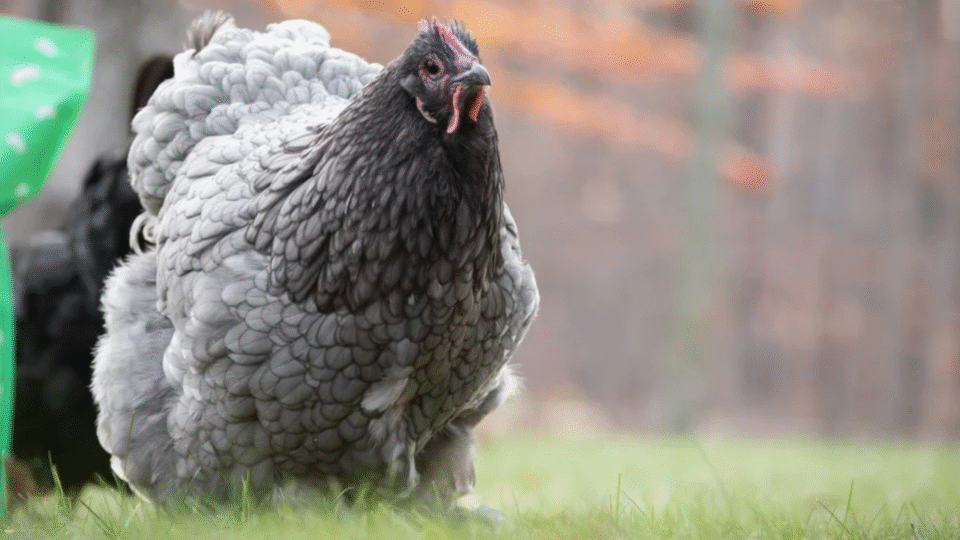If you’re a poultry enthusiast or just someone who loves adorable, fluffy chickens, the Cochin chicken is a breed that deserves your attention. With their massive size, feathered legs, and gentle demeanor, these birds are as fascinating as they are charming.
We’ll explore everything about the Cochin chicken—from their history and appearance to their egg-laying capabilities and care requirements. Whether you’re considering adding them to your flock or just curious about this magnificent breed, read on to uncover the wonders of the Cochin!
The History and Origin of Cochin Chicken
The Cochin chicken has a rich history that traces back to China, where they were originally known as “Shanghai fowl” or “Cochin China fowl.” They were first introduced to the Western world in the mid-19th century when they were gifted to Queen Victoria of England.
Their exotic appearance—large size, fluffy plumage, and feathered legs—quickly made them a sensation in Europe and America. Breeders began refining them for ornamental purposes, leading to the development of the modern Cochin we know today.
Did You Know?
- Cochins were one of the first breeds admitted to the American Poultry Association (APA) in 1874.
- They played a significant role in the “Hen Fever” of the 1850s, a period when fancy poultry breeding became a major hobby.
Cochin Chicken Appearance: Fluff Balls with Feathered Feet
One look at a Cochin chicken, and you’ll understand why they’re often called “gentle giants.” Here’s what makes them stand out:
Size & Weight
- Roosters: 11–12 lbs (5–5.5 kg)
- Hens: 8.5–10 lbs (4–4.5 kg)
- Bantams (miniature version): About 1.5–2 lbs (0.7–0.9 kg)
Feathers & Colors
Cochins are heavily feathered, with soft, downy plumage that extends down to their shanks and toes, giving them a “pantaloons” effect. They come in a variety of stunning colors, including:
- Buff (the most popular)
- Black
- White
- Partridge
- Blue
- Splash
- Barred
Their small comb and wattles (compared to their body size) help them tolerate colder climates better than some other breeds.
Cochin Chicken Temperament: The Gentle Giants
If you’re looking for a friendly, docile, and easygoing chicken, the Cochin is a perfect choice. Here’s why:
✅ Great with Kids & Pets – Their calm nature makes them excellent for families.
✅ Broody & Motherly – Hens are known for being fantastic mothers, often going broody and hatching eggs (even those of other breeds!).
✅ Sociable & Non-Aggressive – Roosters are rarely aggressive, making them good flock leaders.
⚠️ One Quirk: Because of their heavy feathering, they can be less heat-tolerant and may need extra shade in summer.
Egg Production: How Many Eggs Do Cochins Lay?
While Cochins are not the best layers, they do contribute moderately:
- Egg Color: Light brown
- Egg Size: Medium to large
- Egg Production: 150–180 eggs per year (about 3 per week)
- Broodiness: High (they love sitting on eggs!)
Comparison to Other Breeds
| Breed | Annual Egg Production | Egg Color |
| Cochin | 150–180 | Light brown |
| Leghorn | 280–320 | White |
| Rhode Island Red | 250–300 | Brown |
If you’re looking for high egg production, Cochins may not be your best bet. But if you want a sweet, ornamental bird that occasionally lays eggs, they’re fantastic!
Cochin Chicken Care Guide
Housing Needs
- Space: Due to their size, they need more coop space than smaller breeds (at least 4 sq ft per bird inside the coop and 10 sq ft in the run).
- Feathered Feet Care: Their fluffy legs can get muddy, so keeping their living area dry and clean is essential to prevent mites and infections.
- Cold Hardy, Heat Sensitive: They thrive in cold weather but need shade and fresh water in summer.
Diet & Nutrition
- Standard Layer Feed (16–18% protein)
- Occasional Treats: Vegetables, fruits, mealworms (in moderation)
- Grit & Oyster Shell (for digestion and strong eggshells)
Health Considerations
- Feather Mites/Lice – Check their fluffy legs regularly.
- Bumblefoot – Due to their weight, they can develop foot infections if perches are too high.
- Obesity – Since they’re not super active, monitor their food intake.
Are Cochin Chicken Right for You?
Best For:
✔️ Beginners (friendly & easy to handle)
✔️ ️ Ornamental/ Show Birds (stunning looks!)
✔️ Backyard Flocks with Kids (gentle nature)
Not Ideal For:
❌ Hot Climates (they overheat easily)
❌ High Egg Production Needs (they lay moderately)
❌ Free-Range in Muddy Areas (feathered feet can get dirty)
Fun Facts About Cochin Chicken
🔹 They’re like “living pillows” – Their soft feathers make them irresistible to pet!
🔹 Queen Victoria’s Favorites – She kept Cochins in her royal aviaries.
🔹 They’re Slow Movers – Don’t expect them to outrun predators—they waddle!
Final Thoughts: The Cochin Chicken – A Feathered Masterpiece
Whether you’re drawn to their fluffy appearance, sweet personality, or historical charm, the Cochin chicken is a breed that stands out in any flock. While they may not be the most prolific egg layers, their gentle nature and stunning looks make them a favorite among poultry lovers.
If you’re ready to add a cuddly, feathered giant to your backyard, the Cochin might just be your perfect match!

